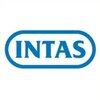Senior Research Associate
80+ Senior Research Associate Interview Questions and Answers

Asked in Intas Pharmaceuticals

Q. Type of dissolution and method development in it , type of formulations handled and method development on it. How to start the force degradation and lipid content analysis. Use various membrane filters in metho...
read moreThe interview question asks about dissolution and method development, formulation handling, force degradation, lipid content analysis, and the use of membrane filters in methods.
Dissolution refers to the process of a solid substance dissolving in a liquid medium.
Method development involves creating and optimizing analytical methods for various purposes.
Formulations handled can include tablets, capsules, suspensions, or solutions.
Force degradation is a technique used to accele...read more

Asked in Piramal Pharma

Q. What is the difference between discriminatory media and bio-relevant media?
Discriminatory media is biased towards certain groups while bio relevant media mimics the natural environment of cells.
Discriminatory media can be based on race, gender, or other factors that unfairly favor or disadvantage certain groups
Bio relevant media is designed to replicate the conditions that cells would experience in the body, such as temperature, pH, and nutrient levels
Discriminatory media can lead to inaccurate or incomplete research results, while bio relevant medi...read more
Senior Research Associate Interview Questions and Answers for Freshers

Asked in Chemveda Life Sciences

Q. What are the different types of detectors for HPLC?
Different types of detectors for HPLC include UV-Vis, fluorescence, refractive index, and mass spectrometry.
UV-Vis detector measures the absorbance of UV or visible light by the analyte.
Fluorescence detector measures the fluorescence emitted by the analyte when excited by light.
Refractive index detector measures the change in refractive index of the mobile phase caused by the analyte.
Mass spectrometry detector measures the mass-to-charge ratio of ions produced by the analyte.

Asked in India Ratings & Research

Q. 1. What is DSCR ? Why is pre-tax amount used in the calculation?
DSCR stands for Debt Service Coverage Ratio. Pre-tax amount is used in the calculation to ensure that the borrower has enough income to cover their debt obligations.
DSCR is a financial ratio used to determine if a borrower has enough income to cover their debt obligations
It is calculated by dividing the borrower's pre-tax income by their total debt service
A DSCR of 1 or higher indicates that the borrower has enough income to cover their debt obligations
Pre-tax amount is used ...read more

Asked in Chemveda Life Sciences

Q. Which compounds are ELSD inactive?
The compounds that were ELSD inactive are those that did not produce a response in the ELSD detector.
ELSD inactive compounds do not show any signal or peak in the ELSD detector.
These compounds may have low or no response to the ELSD detection method.
ELSD inactive compounds can be identified by comparing their chromatographic profiles to those of active compounds.
Examples of ELSD inactive compounds include certain sugars, salts, and some non-volatile compounds.

Asked in Aragen Life Sciences

Q. How can you differentiate between cis and trans isomers using proton Nuclear Magnetic Resonance (NMR) spectroscopy?
Cis and trans isomers can be differentiated using proton NMR spectroscopy based on chemical shift values and coupling constants.
Cis isomers typically have similar chemical shift values for protons on the same carbon atom, while trans isomers have different chemical shift values.
Cis isomers exhibit larger coupling constants between protons on adjacent carbon atoms compared to trans isomers.
Analysis of the splitting patterns in the NMR spectrum can also help differentiate betwe...read more
Senior Research Associate Jobs




Asked in Aragen Life Sciences

Q. How can both the product and the partially consumed starting material be separated in an ester hydrolysis reaction?
The product and partially consumed starting material can be separated in an ester hydrolysis reaction by using techniques such as distillation, extraction, or chromatography.
Distillation can be used to separate the product and starting material based on their different boiling points.
Extraction involves using a solvent to selectively extract one component from the mixture.
Chromatography techniques such as column chromatography or thin-layer chromatography can be used to separ...read more

Asked in Piramal Pharma

Q. How will you perform method precision for a related substances method?
Method precision for related substances method is performed by analyzing multiple samples of known concentration and calculating the standard deviation.
Analyze multiple samples of known concentration
Calculate the standard deviation
Ensure the precision is within acceptable limits
Repeat the analysis to confirm the precision
Use appropriate statistical tools to analyze the data
Share interview questions and help millions of jobseekers 🌟

Asked in Auxilia Pharmaceuticals

Q. How much number of products successfully passed scale up and exhibit batches and what is your experience if failed??
I have successfully scaled up and exhibited batches for 10 products. In case of failure, I analyze the root cause and suggest corrective actions.
Successfully scaled up and exhibited batches for 10 products
Analyzed root cause and suggested corrective actions in case of failure
Experience in troubleshooting and problem-solving
Collaborated with cross-functional teams to ensure successful scale-up
Continuous monitoring and optimization of processes

Asked in Ipca Laboratories

Q. What is LOQ as per ICH guidelines? What methods are used for determining LOQ?
LOQ stands for Limit of Quantitation as per ICH guidelines. It is the lowest concentration of an analyte that can be reliably measured.
LOQ is determined by analyzing a series of samples with known concentrations of the analyte and calculating the standard deviation and slope of the calibration curve.
The LOQ is typically defined as the concentration at which the signal-to-noise ratio is at least 10:1.
It is important to establish the LOQ for a method to ensure accurate and prec...read more

Asked in India Ratings & Research

Q. How do you analyze an exponential increase in turnover?
Exponential increase in turnover can be analyzed by identifying the factors contributing to the increase and projecting future growth.
Identify the source of the increase (e.g. new product launch, market expansion)
Analyze customer behavior and purchasing patterns
Evaluate competition and market trends
Use statistical models to project future growth
Consider potential challenges and risks to sustained growth

Asked in Aragen Life Sciences

Q. What is the concept of a (NOE), and can you provide an example to illustrate it?
A NOE (Nuclear Overhauser Effect) is a phenomenon in NMR spectroscopy where the nuclear spins of two atoms interact with each other.
NOE occurs when the nuclear spins of two atoms are coupled through space, leading to changes in their relaxation rates.
It is used in NMR spectroscopy to determine the distance between atoms in a molecule.
An example of NOE is the observation of enhanced signal intensity between protons that are close in space in a molecule.

Asked in Aragen Life Sciences

Q. What is the workup procedure for LAH (Lithium Aluminum Hydride) reduction?
LAH reduction workup involves quenching with water, acid-base extraction, and purification steps.
Quench LAH with water to destroy excess reagent and generate aluminum hydroxide
Perform acid-base extraction to separate the organic product from byproducts
Purify the organic product using techniques like distillation or chromatography

Asked in Aragen Life Sciences

Q. What is the LCMS pattern of the chloro compound, and what is the reason for its appearance?
The LCMS pattern of the chloro compound typically shows a peak corresponding to the molecular ion with a mass shift due to the chlorine isotope.
LCMS analysis of chloro compounds often shows a peak corresponding to the molecular ion (M+) with a mass shift due to the presence of chlorine isotopes.
The presence of chlorine atoms in the compound leads to characteristic isotope patterns in the LCMS spectrum.
The isotopic pattern in LCMS can help in confirming the presence of chlorin...read more

Asked in India Ratings & Research

Q. How would you analyze the credit worthiness of a company?
To analyse credit worthiness of a company, various financial ratios and credit scores are used.
Check the company's credit score and credit history
Analyze the company's financial statements and ratios such as debt-to-equity ratio, current ratio, and interest coverage ratio
Evaluate the company's industry and market trends
Assess the company's management and leadership
Consider any external factors that may affect the company's credit worthiness, such as economic conditions and re...read more

Asked in Piramal Pharma

Q. What are the EU requirements for multimedia dissolution?
EU requirements for multimedia dissolution
Multimedia dissolution testing is required for certain types of drug products in the EU
The requirements are outlined in the European Pharmacopoeia (EP)
The EP specifies the apparatus, dissolution medium, and testing conditions for multimedia dissolution
The acceptance criteria for dissolution testing are also provided in the EP

Asked in Jubilant Chemsys

Q. What is the role of a particular reagent in a reaction?
The role of a particular reagent in a reaction is to initiate, catalyze, or participate in the reaction.
Reagents can be used to initiate a reaction by providing energy or a catalyst to start the reaction.
Reagents can also be used to catalyze a reaction by lowering the activation energy required for the reaction to occur.
Reagents can participate in a reaction by reacting with other molecules to form new products.
For example, in the reaction between hydrochloric acid and sodium...read more
Asked in Auxilia Pharmaceuticals

Q. Which types of products have you handled, and how do you formulate their stable forms?
The type of products handled and how to formulate its stable form depends on the specific product and its ingredients.
The type of product will determine the formulation process
Ingredients must be carefully selected and tested for stability
Formulation may involve adjusting pH, adding stabilizers, or using emulsifiers
Examples of products include cosmetics, pharmaceuticals, and food products

Asked in Jubilant Chemsys

Q. What would be the final product if we replace this reagent with that one?
The final product would depend on the specific reagents used and the reaction conditions.
The final product could be different in terms of yield, purity, and chemical properties.
The reaction mechanism and kinetics could also be affected by the change in reagent.
Examples of changes in reagents could include using a different catalyst or solvent.
The final product could also be affected by the stoichiometry of the reaction.
It is important to consider the potential side reactions ...read more

Asked in Ipca Laboratories

Q. What are the criteria for specificity in an assay method?
Specificity in assay method refers to the ability of the method to accurately measure only the target analyte without interference from other substances.
Specificity is determined by testing the method with known standards and samples containing the target analyte as well as potential interfering substances.
Cross-reactivity with similar compounds should be evaluated to ensure the method is specific to the target analyte.
Selectivity is another term used interchangeably with spe...read more

Asked in Aragen Life Sciences

Q. How do you quench a small batch palladium-carbon (Pd-C) reaction?
Quenching a small batch Pd-C reaction involves adding a quenching agent to stop the reaction and isolate the desired product.
Add a quenching agent such as water or acid to the reaction mixture
Stir the mixture to ensure thorough quenching
Monitor the reaction to determine the appropriate time for quenching
Isolate the desired product after quenching

Asked in Aragen Life Sciences

Q. Why is it necessary to degas palladium-catalyzed coupling reactions?
Degas palladium-catalyzed coupling reactions to remove oxygen and water, which can inhibit the reaction and reduce yield.
Removes oxygen and water which can inhibit the reaction
Improves yield and efficiency of the coupling reaction
Prevents formation of palladium oxides which are inactive catalysts
Enhances selectivity of the reaction by removing impurities

Asked in India Ratings & Research

Q. 2. Formula for ROCE . Whether short term loans are included in the calculation
ROCE formula and inclusion of short term loans in calculation
ROCE formula is (Operating Profit / Capital Employed) x 100
Capital Employed includes all long-term and short-term assets minus short-term liabilities
Short-term loans are included in the calculation of capital employed
ROCE is a measure of how efficiently a company is using its capital to generate profits

Asked in Intas Pharmaceuticals

Q. development . How to quantify the free and bound drug in liposomal formulation and it's quantify.
The free and bound drug in liposomal formulation can be quantified using various methods such as dialysis, ultrafiltration, and equilibrium dialysis.
Dialysis involves placing the liposomal formulation in a dialysis bag and allowing the free drug to diffuse out of the bag into a surrounding buffer solution.
Ultrafiltration separates the free drug from the liposomal formulation using a filter with a specific molecular weight cutoff.
Equilibrium dialysis involves placing the lipos...read more

Asked in Celon Laboratories

Q. How do you establish the Limit of Detection and Limit of Quantification?
Establishing Limit of Detection and Limit of Quantification
Limit of Detection (LOD) is the lowest concentration of analyte that can be reliably detected
Limit of Quantification (LOQ) is the lowest concentration of analyte that can be accurately quantified
LOD and LOQ are determined by analyzing samples with known low concentrations of analyte
LOD is typically defined as the concentration at which the signal-to-noise ratio is 3:1
LOQ is typically defined as the concentration at wh...read more

Asked in Jasper Colin

Q. How do you find information that is not readily available on open platforms?
Finding hard-to-access information requires strategic approaches, including networking, specialized databases, and expert consultations.
Networking: Connect with professionals in the field through platforms like LinkedIn to gain insights and access unpublished data.
Specialized Databases: Utilize academic databases like PubMed or Scopus for in-depth research articles not available on general platforms.
Freedom of Information Requests: In some cases, you can file requests to gove...read more

Asked in Par Pharmaceutical Companies

Q. What is Analytical method validation?
Analytical method validation is the process of demonstrating that an analytical method is suitable for its intended use.
It involves testing the accuracy, precision, specificity, and robustness of the method.
Validation is necessary to ensure that the results obtained from the method are reliable and reproducible.
It is a requirement for regulatory compliance in industries such as pharmaceuticals and food.
Examples of analytical methods that require validation include HPLC, GC, a...read more

Asked in TELUS Digital

Q. What is Hooks? Name some hooks used in your projects
Hooks are functions that allow you to use state and other React features in functional components.
useState() - used to add state to functional components
useEffect() - used to perform side effects in functional components
useContext() - used to access context in functional components

Asked in Intas Pharmaceuticals

Q. Criticality for method development in various lipids
Method development critical for accurate lipid analysis. Different lipids require different methods.
Method development is crucial for accurate lipid analysis
Different lipids require different methods for analysis
Factors like polarity, solubility, and structure affect method development
Examples of lipids include triglycerides, phospholipids, and cholesterol esters

Asked in Ipca Laboratories

Q. Write a chemical reaction, predict the H1 NMR, and use different conditions for the reaction.
The question asks for a reaction and prediction of H1 NMR under different conditions.
Provide a detailed reaction involving a compound and reagent
Discuss the possible H1 NMR shifts based on the reaction conditions
Consider variations in temperature, solvent, and concentration for different predictions
Interview Questions of Similar Designations
Interview Experiences of Popular Companies






Calculate your in-hand salary
Confused about how your in-hand salary is calculated? Enter your annual salary (CTC) and get your in-hand salary


Reviews
Interviews
Salaries
Users










